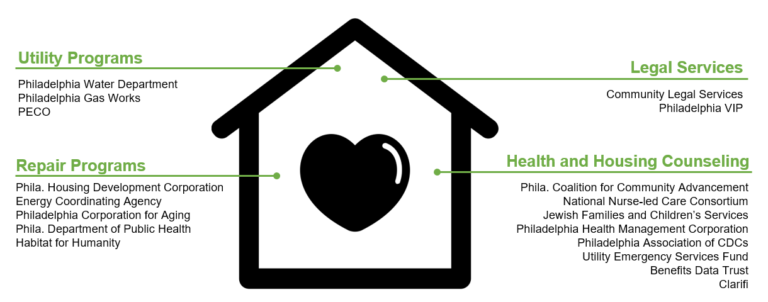ACEEE Toolkit: How Energy Efficiency Programs Can Reach Underserved Residents
By Sammie Trvalik & Ruby Ranoa, Earth Forward Group
Published January 22, 2024
Low-income households continue to receive a disproportionately small amount of energy-savings, despite increased spending by most gas and utility companies on energy-efficiency services, as reported by the American Council for an Energy Efficient Economy (ACEEE) in 2022. EFG covered this topic in detail in this 2023 blog article.
ACEEE, a nonprofit research organization that develops policies to reduce energy waste and combat climate change, prepared a useful toolkit in late 2023 to guide gas and utility companies to better serve residents who would most benefit from energy-efficiency services. The report, titled “Adapting Energy Efficiency Programs to Reach Underserved Residents”, details multiple previously successful strategies for how these companies can address the gap in energy equity, aiming to increase program uptake among underserved groups. It delineates specific customer groups that may be underserved by these programs, delving into customized strategies for each demographic, acknowledging the necessity for tailored approaches based on distinct community needs and barriers.
Earth Forward Group (EFG) is uniquely positioned in the energy sector to observe these trends first-hand. As a workforce development provider in the energy-efficiency, home performance and weatherization fields, we work closely with community members, utility companies and energy providers to build and deliver energy programs and direct services to households who are most in need of their benefits. Upon reviewing this report, several suggestions stood out to our team:
Expand community engagement efforts
The toolkit proposes overarching strategies aimed at broadly extending outreach to all underserved customer demographic groups. It emphasizes the importance of utility companies engaging communities in an equitable manner, which would involve community members in the program development stage to effectively address their needs. Achieving effective community engagement involves identifying and mitigating any participation barriers, sharing leadership roles with community members, fostering trust and transparency through community relationship-building with the utility companies, and establishing accountability mechanisms through open forums.
Three types of equity, applied to the energy system (Source).
Establish a “one-stop shop” for residents
Many energy-efficiency programs employ a complicated and often confusing application process, which can act as an access barrier for all residents. Establishing a “one-stop shop”, a unified point of contact for information, service packages, and applications is crucial to mitigating this. Rather than requiring customers to navigate segmented programs (e.g., having separate programs for single-family residential, multifamily housing, commercial), the “one-stop shop” model can significantly enhance accessibility. An exemplary instance of this approach is the Built to Last program provided by the Philadelphia Energy Authority (PEA), which coordinates various home repair, energy conservation and home health services into one comprehensive package for residents.
All of the services and providers involved in PEA’s Built to Last Program (Image Source)
Develop a diverse and inclusive energy-efficiency workforce
The groups that are underserved by these energy efficiency programs are often the same groups that are underrepresented in the energy efficiency workforce. According to a report by the National Renewable Energy Laboratory, women and Black or African American workers are remarkably underrepresented in the energy efficiency building workforce when compared to national averages. Expanding workforce development programs that target these underrepresented groups and offering barrier-reduction services can help program administrators create a more diverse workforce. The biggest barriers that EFG has previously uncovered in our work includes a lack of transportation to job and training sites and a lack of awareness of the green trade industry in general. In addition to addressing barriers to employment, recruiting initiatives in underrepresented communities are crucial to addressing this equity gap in the growing energy efficiency workforce.
Tailor marketing APPROACH
Properly learning about a target population’s specific needs, preferences, and behaviors can have a big impact on the success of a tailored marketing campaign. For example, a lack of engagement was named a barrier for social housing residents in the UK to participate in energy efficiency programs. To address this, a game called Energy Cat was developed through an EnerGAware project funded by the European Union in 2015, designed as an approachable way for residents to educate themselves on affordable energy-saving measures they could take and the resulting benefits of those actions. In addition to observing reduced electricity and gas usage in the players’ actual homes, the study revealed an increased understanding of home energy usage and fuel poverty, as well as documenting a positive trend in the perceived affordability of their utility bills.
Gameplay from Energy Cat, a game developed to teach residents how and why to take energy-saving measures in their own homes (Image Source)
Establish a program for addressing pre-weatherization repairs
If a home has physical issues such as faulty wiring, excessive moisture, roofing deficiencies, or the presence of asbestos or mold, not only do these pose health and safety risks to their residents, but they also make the homes ineligible from receiving energy-saving weatherization projects. Creating housing rehabilitation programs that address these physical issues, sometimes known as pre-WAP programs, would assist a greater number of low-income customers in making their homes “weatherization-ready.” In Indiana, the state’s WAP office is responsible for implementing the pre-WAP program and successfully transitioned 198 homes from permanent deferral to complete weatherization in 2016, as reported by the National Association for State Community Services Programs.
This ACEEE toolkit offers several comprehensive strategies to address the existing gap in energy equity. It highlights the needs for expanded community engagement, the establishment of a “one-stop shop” portal for customers, a diverse energy efficiency workforce, tailored marketing strategies, and an enhanced focus on pre-weatherization repair access. EFG is actively involved in advancing these efforts through our weatherization workforce development programs in several states. Our programs are specifically designed to train the communities who need it most, aligning with our commitment to fostering a more inclusive and sustainable energy future.




